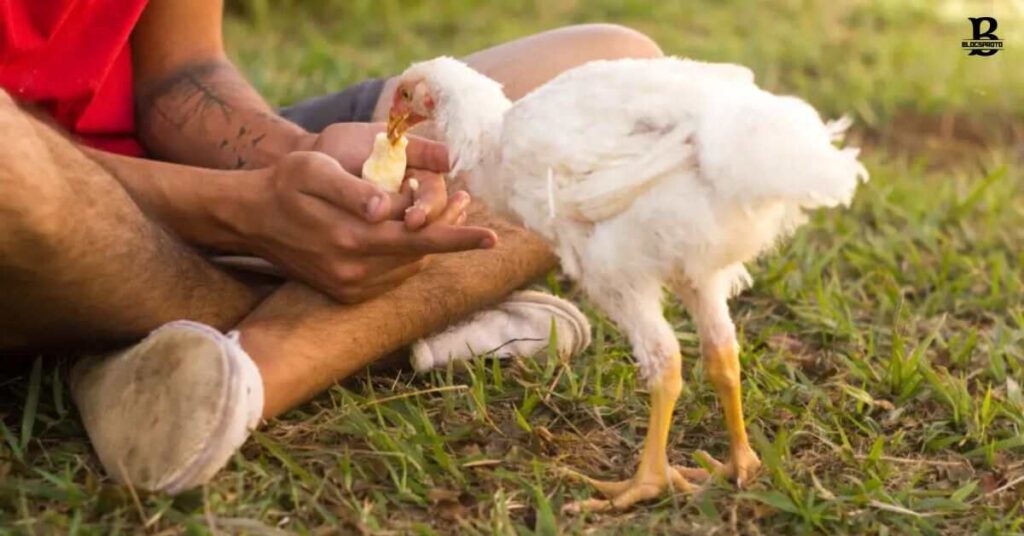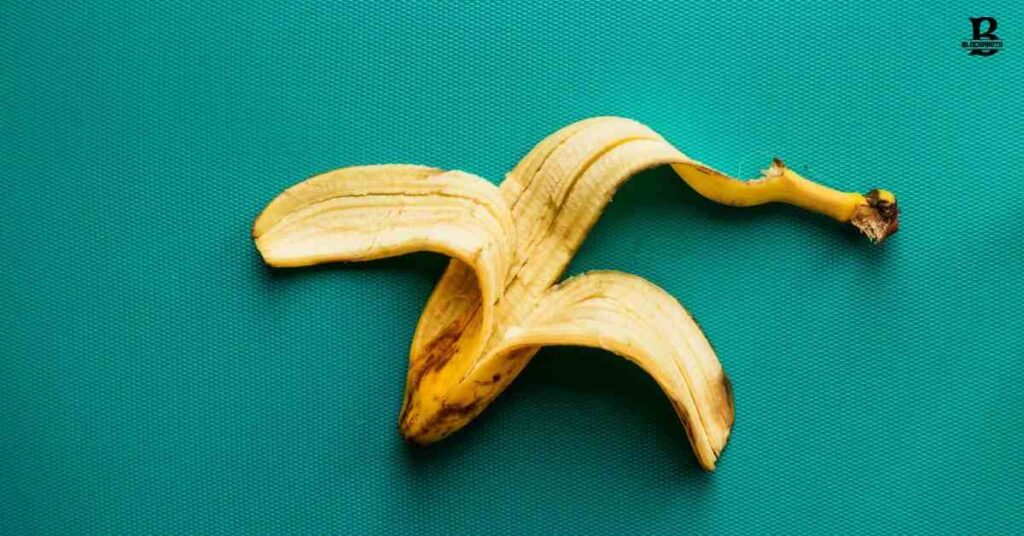Chickens enjoy bananas and their peels too. But are banana peels safe for them. Yes they are! Feeding your chickens banana peels can be a sustainable and healthy addition to their diet. Banana peels are full of nutrients. They have fiber vitamins and minerals that chickens need. They are a great way to reduce food waste in your kitchen.
To wash the peels well before feeding them to your chickens. Chop them into small pieces to make it easier for the chickens to eat. With this simple addition you can keep your chickens happy and healthy while being kind to the environment.
Introduction to Feeding Chickens
Raising a healthy and productive backyard flock requires providing a balanced and nutritious diet for your feathered friends. While commercial chicken feeds are formulated to meet the basic nutritional requirements.
And many chicken owners are seeking sustainable and cost-effective alternatives to supplement their birds’ diets. One such option that has garnered attention is the use of banana peels as a treat and dietary supplement for chickens. But can chickens really eat banana peels.
Understanding Chicken Nutrition
Before delving into the specifics of banana peels. it is essential to understand the fundamental nutritional needs of chickens. Like all living creatures, chickens require a balanced diet rich in proteins, carbohydrates, vitamins, and minerals to thrive. These essential nutrients play crucial roles in various aspects of a chicken’s life, including:
- Proteins: Essential for growth, egg production and feather development.
- Carbohydrates: Provide energy for activities and metabolic processes.
- Vitamins: Support various bodily functions, such as immune system health, egg production, and overall well-being.
- Minerals: Necessary for strong bones, eggshell formation, and proper muscle and nerve function.
Ensuring that your chickens receive the appropriate ratio of these nutrients is crucial for maintaining their overall health, egg production and longevity. While commercial feeds are formulated to meet these dietary requirements introducing variety through supplemental treats like banana peels can offer additional benefits.
Read this blog : Natural Ways to Detoxify Heavy Metals for Kids: A Parent’s Guide
Benefits of Diversifying Chicken Diet
While commercial chicken feeds provide a well-balanced and complete diet, introducing variety can be advantageous for several reasons:
Novel Flavors and Textures: Offering different treats and supplements exposes your flock to new flavors and textures, keeping them interested and engaged with their food.
Nutrient Diversity: Different foods can contribute unique nutritional profiles, ensuring that your chickens receive a wider array of vitamins, minerals, and other beneficial compounds.
Foraging Behavior: Providing a diverse diet encourages natural foraging behaviors, which can improve your chickens’ overall well-being and mental stimulation.
Cost-Effective Supplementation: By incorporating readily available and inexpensive treats like banana peels, you can cost-effectively supplement your chickens’ diet.
Nutritional Value of Banana Peels for Chickens

While banana peels may not be the first thing that comes to mind when thinking about chicken feed. They offer a surprising nutritional punch. Here’s a breakdown of some of the key nutrients found in banana peels:
- Fiber: Banana peels are a rich source of dietary fiber, which can aid in digestion and maintain a healthy gut for your chickens.
- Vitamins: Banana peels contain notable amounts of vitamins, including Vitamin B6 and Vitamin C, essential for various bodily functions and immune system support.
- Minerals: These nutrient-dense peels are a good source of minerals like magnesium, potassium, and manganese which play vital roles in bone health, muscle function, and metabolic processes.
- Protein: While not a primary source of protein banana peels do contain some protein content which can contribute to your chickens’ overall dietary needs.
It is important to note that while banana peels can be a valuable supplement, they should not be considered a complete and balanced diet for your flock. They should be used as a treat or added to your chickens’ regular feed in moderation to provide additional nutrients and variety.
Safety Considerations: Can Chickens Eat Banana Peels?
One of the most commonly asked questions regarding feeding banana peels to chickens is whether it’s safe for them to consume. The good news is that banana peels are generally considered non-toxic and safe for chicken consumption when introduced properly.
However there are a few precautions to keep in mind:
Avoid Chemically Treated Peels
Ensure that the banana peels you feed your chickens have not been treated with pesticides, herbicides or other chemicals as these can be harmful to their health.
Introduce Slowly
As with any new food item, it’s essential to introduce banana peels gradually into your chickens’ diet to avoid potential digestive upset or discomfort.
Moderation is Key
While banana peels can be a nutritious treat they should not make up more than 10% of your chickens’ total diet. Overfeeding can lead to nutritional imbalances and potential health issues.
Prevent Mold and Spoilage
Banana peels can spoil and become moldy if left for too long, especially in warm and humid conditions. Ensure that any banana peels you feed your flock are fresh and free from mold or signs of spoilage.
Preparing Banana Peels for Chicken Consumption
To ensure that your chickens can fully benefit from the nutritional value of banana peels, proper preparation is essential. Here are some steps to follow when preparing banana peels for your flock:
- Wash Thoroughly: Rinse the banana peels under clean running water to remove any dirt, debris or potential chemical residues.
- Chop or Shred: Banana peels can be tough and fibrous, making them difficult for chickens to digest whole. Chop or shred the peels into smaller pieces using a knife, food processor, or even a pair of scissors.
- Feed Fresh or Dried: You can choose to feed the banana peels fresh or allow them to dry out slightly which can help them keep better when mixed into your chickens’ regular feed.
- Mix with Regular Feed: Once prepared, you can mix the chopped or shredded banana peels into your chickens’ regular feed ensuring even distribution and preventing overconsumption of the peels.
Read this blog : Unveiling the Fizz: A Deep Dive into PFAs in Sparkling Water and Your Health
Banana Peels into the Chicken Diet

When introducing any new food item to your chickens’ diet .it is crucial to do so gradually to allow their digestive systems to adjust. The same principle applies when incorporating banana peels into their diet. Here is a recommended approach:
Start with Small Amounts
Begin by mixing a small handful of chopped or shredded banana peels into your chickens’ regular feed. This allows them to become accustomed to the new taste and texture without overwhelming their digestive systems.
Observe the Flock’s Reaction
Closely monitor your flock for any signs of digestive upset, such as loose stools or lethargy, after introducing the banana peels. If any issues arise, temporarily discontinue feeding the peels and consult with a veterinarian or experienced poultry professional.
Gradually Increase
If your chickens tolerate the initial small amounts well, you can gradually increase the quantity of banana peels you mix into their feed over the course of several days or weeks.
Maintain Moderation
Even as your chickens become accustomed to the banana peels, it’s essential to maintain moderation. Banana peels should not make up more than 10% of your chickens’ total diet to prevent potential digestive issues or nutritional imbalances.
Observing Chickens’ Response to Banana Peels
While most chickens tend to enjoy the novel flavor and texture of banana peels, every flock is unique and individual birds may react differently. It is important to observe your flock’s response closely when introducing banana peels to their diet.
Raising a healthy and productive backyard flock requires providing a balanced and nutritious diet for your feathered friends. While commercial chicken feeds are formulated to meet the basic nutritional requirements many chicken owners are seeking sustainable and cost-effective alternatives to supplement their birds’ diets. One such option that has garnered attention is the use of banana peels as a treat and dietary supplement for chickens. But can chickens really eat banana peels .
- Proteins: Essential for growth, egg production, and feather development.
- Carbohydrates: Provide energy for activities and metabolic processes.
- Vitamins: Support various bodily functions, such as immune system health, egg production, and overall well-being.
- Minerals: Necessary for strong bones, eggshell formation, and proper muscle and nerve function.
Ensuring that your chickens receive the appropriate ratio of these nutrients is crucial for maintaining their overall health egg production and longevity. While commercial feeds are formulated to meet these dietary requirements introducing variety through supplemental treats like banana peels can offer additional benefits.
Safety Considerations About Banana Peels
One of the most commonly asked questions regarding feeding banana peels to chickens is whether it is safe for them to consume. The good news is that banana peels are generally considered non-toxic and safe for chicken consumption when introduced properly.
However there are a few precautions to keep in mind:
Avoid Chemically Treated Peels
Ensure that the banana peels you feed your chickens have not been treated with pesticides, herbicides, or other chemicals, as these can be harmful to their health.
Introduce Slowly
As with any new food item, it’s essential to introduce banana peels gradually into your chickens’ diet to avoid potential digestive upset or discomfort.
Moderation is Key
While banana peels can be a nutritious treat, they should not make up more than 10% of your chickens’ total diet. Overfeeding can lead to nutritional imbalances and potential health issues.
Prevent Mold and Spoilage
Banana peels can spoil and become moldy if left for too long, especially in warm and humid conditions. Ensure that any banana peels you feed your flock are fresh and free from mold or signs of spoilage.
By following these simple precautions you can safely incorporate banana peels into your chickens’ diet and provide them with a nutritious and sustainable treat.
Preparing Banana Peels for Chicken Consumption

To ensure that your chickens can fully benefit from the nutritional value of banana peels, proper preparation is essential. Here are some steps to follow when preparing banana peels for your flock:
- Wash Thoroughly: Rinse the banana peels under clean running water to remove any dirt, debris, or potential chemical residues.
- Chop or Shred: Banana peels can be tough and fibrous making them difficult for chickens to digest whole. Chop or shred the peels into smaller pieces using a knife, food processor, or even a pair of scissors.
- Feed Fresh or Dried: You can choose to feed the banana peels fresh or allow them to dry out slightly, which can help them keep better when mixed into your chickens’ regular feed.
- Mix with Regular Feed: Once prepared you can mix the chopped or shredded banana peels into your chickens’ regular feed ensuring even distribution and preventing overconsumption of the peels.
Sustainable Practices in Feeding Backyard Flocks
Incorporating banana peels into your chickens’ diet not only provides nutritional benefits but also aligns with sustainable and eco-friendly practices in raising backyard flocks. Here are some ways in which feeding banana peels contributes to sustainable flock management:
Reducing Food Waste
By repurposing banana peels which are often discarded as waste you are reducing the amount of food waste generated in your household or community.
Cost-Effective Supplementation
Banana peels are an inexpensive and readily available source of nutrition, making them a cost-effective way to supplement your chickens’ diet without breaking the bank.

Closing the Loop
The nitrogen-rich manure produced by your chickens can be used to fertilize a compost pile or garden where banana peels can be composted and recycled back into the system, creating a sustainable cycle.
Minimizing Environmental Impact
By utilizing locally sourced and organic banana peels you can reduce the carbon footprint associated with commercial feed production and transportation.
Frequently Asked Questions
Can banana peels be used as chicken feed?
Yes, banana peels can be used as a nutritious supplement for chickens.
Can we eat banana and chicken together?
Yes, bananas and chicken can be eaten together in dishes like curries or salads.
Are banana leaves good for chickens?
Yes, banana leaves can provide shade and shelter for chickens in their coop or run.
Why do chickens like bananas?
Chickens like bananas because they enjoy the sweet taste and texture of the fruit.
Why are banana leaves important in poultry?
Banana leaves are important in poultry as they can be used as bedding material, providing comfort and insulation for chickens.
Conclusion
The practice of feeding banana peels to backyard chickens presents a sustainable and nutritious approach to poultry care. By understanding the nutritional benefits and safety considerations. And proper preparation methods outlined in this guide chicken owners can effectively supplement their flock’s diet while minimizing food waste. Incorporating banana peels into chickens’ nutrition not only enriches. Their diet with essential vitamins minerals and fiber but also promotes natural foraging behaviors and mental stimulation.
It is vital to maintain moderation and observe individual flock responses. This sustainable practice aligns with eco-friendly principles by repurposing kitchen scraps reducing reliance on commercial feed and closing the loop through composting. Ultimately by embracing such practices chicken enthusiasts can foster healthier happier flocks while contributing positively to environmental stewardship.

Maxwell Brooks, a prolific wordsmith on BlogsProto.com, navigates literary realms with grace. His prose dances through genres, captivating readers with tales that resonate, leaving an indelible mark on the digital literary landscape.











